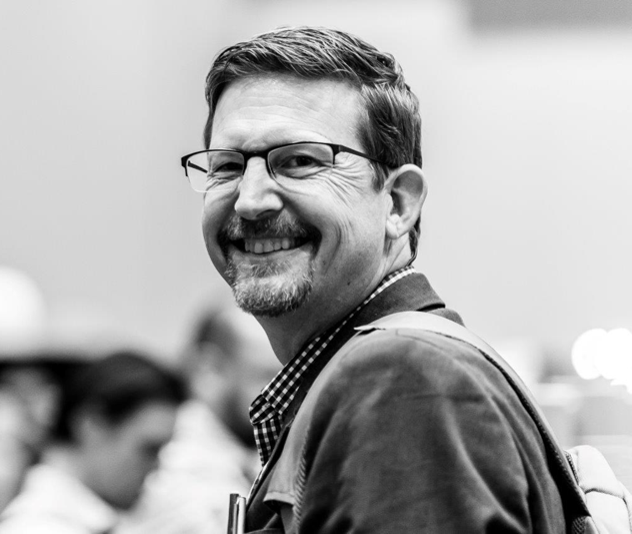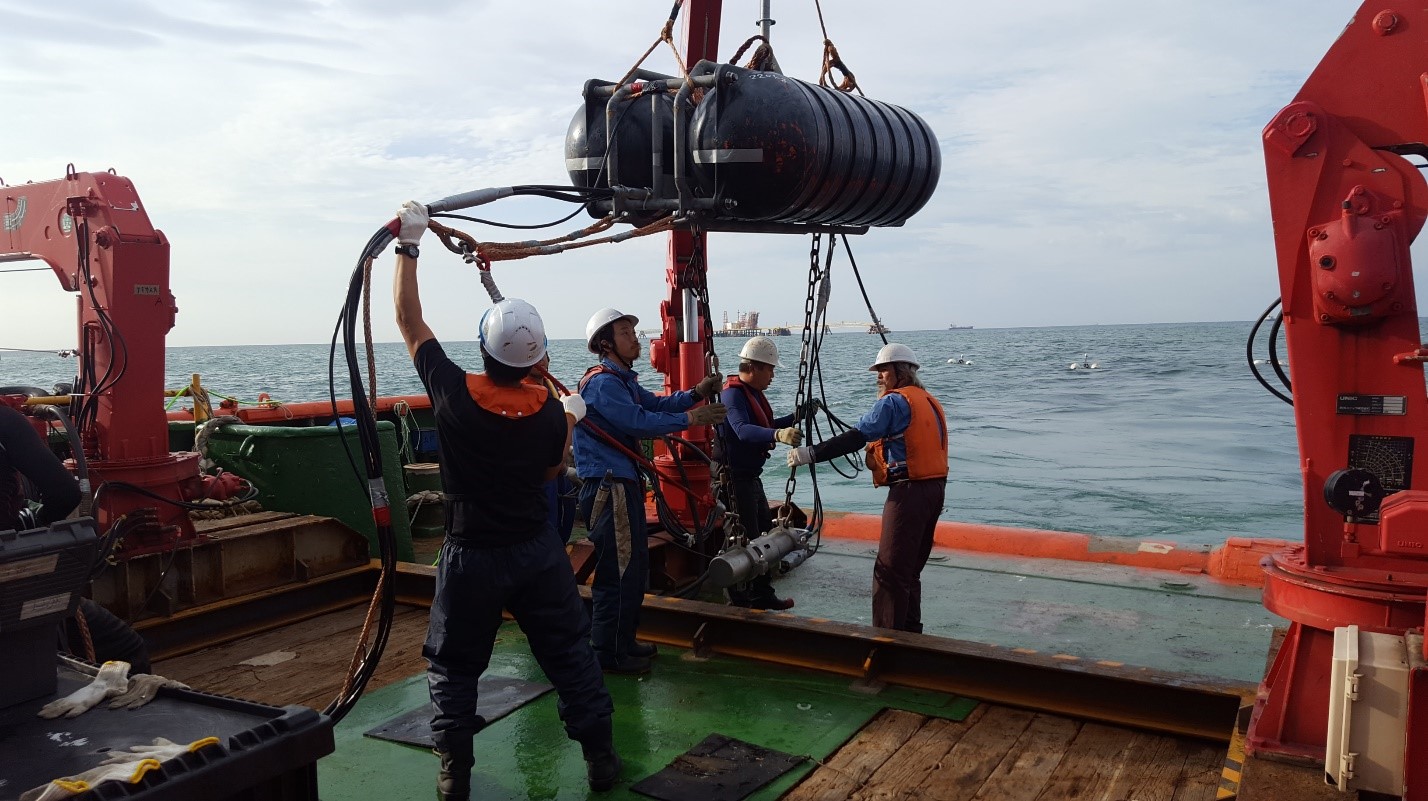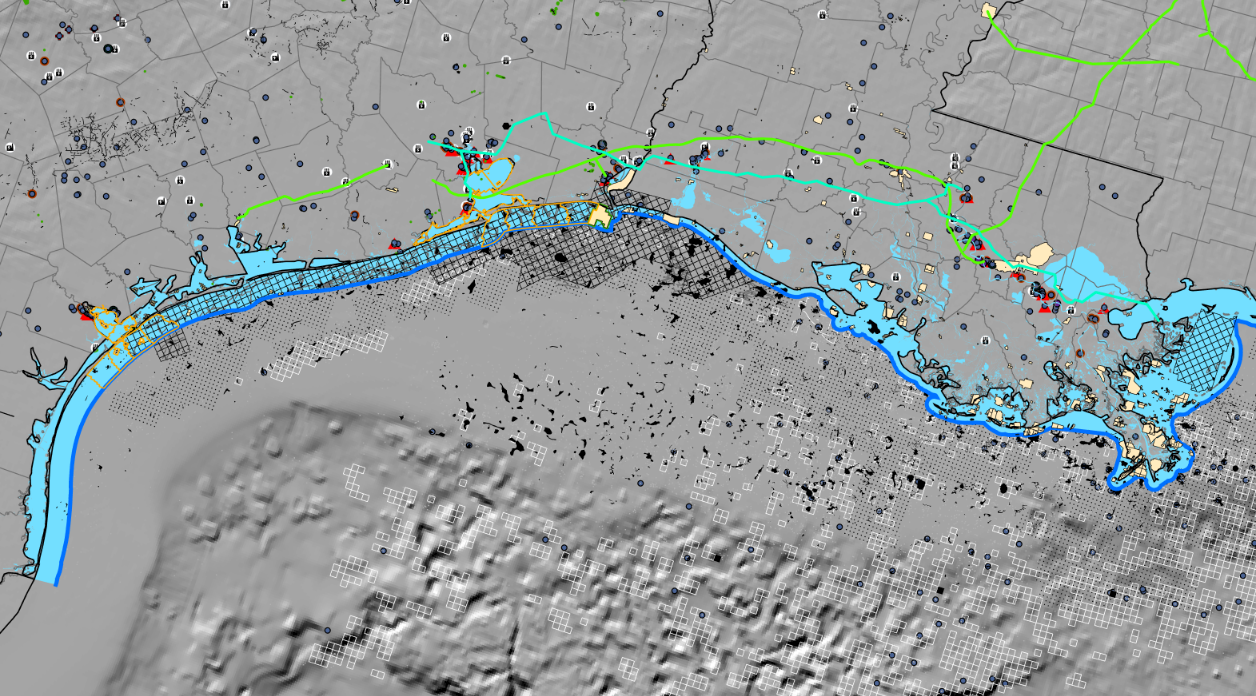Dr. Tip Meckel
About Tip

Dr. Tip Meckel is a research scientist investigating geologic carbon sequestration topics for the Bureau of Economic Geology at The University of Texas at Austin. He joined the Gulf Coast Carbon Center at the Bureau in 2006, focusing on geologic characterization, structural geology, monitoring design, and pressure evolution for CO2 injections. Tip has been involved with several large-scale field demonstration projects funded through DOE’s National Energy Technology Laboratory. After early exposure during the FRIO tests east of Houston in 2006, he co-directed the research program for the SECARB demonstration project in Cranfield Mississippi, and currently leads the research initiative to identify offshore sequestration potential in the Gulf of Mexico with focus on capacity assessment and seismic monitoring technologies.
What are your current research activities?
I am currently involved in a number of projects related to offshore storage of CO2 emissions from industrial sources. After a decade managing regional seismic stratigraphic mapping in the Texas State Waters, and a number of related DOE-funded research projects, I am currently Co-PI of an offshore storage project funded by DOE for the Corpus Christi region, the largest energy port in the United States. I also operate a high-resolution 3D marine seismic acquisition system, with three planned acquisition cruises in the Gulf of Mexico in the next two years, focusing on shallow subsurface characterization, project de-risking, and monitoring of CCS projects.
What excites you the most about your current research?
I am most excited about the intersection of my research among societal, economic, policy, and energy transition topics. CCS is an extremely challenging topic for many reasons (which makes it endlessly interesting), but it presents an opportunity to integrate science directly into decisions of national and global importance. Conducting research that serves societal needs is an exciting space to work in, and I am lucky to have been able to pursue that for the past 17 years at the Gulf Coast Carbon Center (GCCC).
What is the desired outcome of your research?
If my research is successful, we will have a vibrant and effective CCS storage industry in Texas and the greater Gulf Coast in coming years. This will result in decreased atmospheric emissions of CO2 from industrial sources while also providing income to the Texas Permanent School Fund from CCS leasing and injection royalties, which will support primary education throughout Texas.
What do you need in order to make your research efforts more successful?
I think it is time for a more integrated and focused multidisciplinary effort on CCS across The University of Texas at Austin. We have many people in geosciences, petroleum and chemical engineering, law school, business school, computational sciences, etc. with growing relevant experience. I believe The University of Texas at Austin can be the flagship CCS research institution in the world, but we need to integrate our strengths and communicate our vision to attract and educate the next generation practitioners. Like all challenges, we can achieve more when the effort is focused on a clear goal.
What are your latest papers or publications, and what is most exciting about them?
I am proud of the 2021 publication on the development of CCS hubs on the Gulf Coast. I think we can now see the fundamental building blocks of a long-term growth industry that will support the region’s historical energy foundations while leading the global important effort to reduce associated industrial emissions.
Meckel, T. A., Bump, A. P., Hovorka, S. D., and Treviño, R. H., 2021, Carbon capture, utilization, and storage hub development on the Gulf Coast: Greenhouse Gases: Science and Technology, v. 11, no. 4, p. 619–632, http://doi.org/10.1002/ghg.2082.
Who will benefit from your latest paper or publication?
I hope my publications will be used by industry and regulators and other decision-makers to guide the responsible growth of CCS. I am often contacted by national newspapers or large commercial banks asking: “Is this CCS stuff real?” I send them the relevant publications and talk them through the developments that indicate that many see CCS as leading to jobs and community benefits.
What was your most exciting paper or publication and why?
A highlight of my career was the opportunity to participate in a CCS field project in Hokkaido, Japan. After working for a couple of years to set the stage through international negotiations between the United States and Japan, I was able to transport my marine 3D seismic system to the Tomakomai CCS project (thank Ramon Treviño and Jan Sherman!) and work on a Japanese ship to acquire a first of a kind data set over an active offshore CO2 injection. This project was challenging from a technical perspective but also had so many exciting developments in data acquisition and processing. I worked with an incredibly talented postdoc, Ye Feng, on data processing for this project, and we had fun charting new territory. This project had it all: international fieldwork, high-impact science, and development of new ideas and methods.
Meckel, T., Feng, Y. E., Treviño, R. H., and Sava, D., 2019, High-resolution 3D marine seismic acquisition in the overburden at the Tomakomai CO2 storage project, offshore Hokkaido, Japan: International Journal of Greenhouse Gas Control, v. 88, p. 124–133, http://doi.org/10.1016/j.ijggc.2019.05.034.
Who are the types of research partners you are seeking, and what skills or expertise could be of benefit to your research?
Creativity is the currency of research—CCS research will be most successful when it engages the growing pool of human talent, ingenuity, and passion emerging from top education centers. I look forward to working with the next generation of CCS practitioners and watching them carry the field forward. Most importantly, we need to ensure that the next generation of CCS projects benefit the communities they are integrated into. Once the public sees the direct positive impact on their community from CCS development, widespread adoption and deployment will follow. If we don’t get the public outreach and community benefits aspects weighted correctly, CCS will lag in adoption.
What are the desired relationships, expertise, or skills that could be brought in to benefit your research?
CCS is technically ready for large-scale deployment. There are some interesting challenges that remain, such as the traditional challenge of understanding geological reservoir heterogeneity and understanding the performance of legacy wells better, but these topics are all manageable now. What we need to do now is integrate technical readiness with new financial models for developing CCS projects, similar to how the Power Purchase Agreement (PPA) for solar projects led to additional private investment. The carbon offset and credit markets are rapidly evolving, and CCS can contribute meaningfully to that new market to attract the needed investment to have lasting impact.
What have been recent successes associated with your research?
The long-term effort to map the geology and CCS storage potential of the Texas State Waters resulted in a 2017 Bureau Report of Investigations and subsequently a first ever lease award process for CCS in State Waters. By recommending areas to begin leasing, we now have a commercial CCS lease in the offshore portion of Jefferson County, south of Port Arthur in southeast Texas. That was followed up with a lease round for over a million acres (about 1,500 square miles) of offshore land for CCS in the upper and central portions of the Texas coast, with lease finalization expected in the fall of 2023 (see map figure below). All of this effort led recently to my appointment to the White House Task Force on CCS in Federal Lands (including the outer continental shelf—the next frontier for CCS), and I am honored to be recognized as a national expert and to serve on this important committee.
Treviño, R. H., and Meckel, T., eds., 2017, Geological CO2 sequestration atlas of Miocene strata, offshore Texas state waters: Bureau of Economic Geology Report of Investigations No. 283, 80 p, http://doi.org/10.23867/RI0283D.

Deploying the compressed air acoustic source for the high-resolution 3D seismic acquisition system offshore Hokkaido, Japan. Thanks to Dallas Dunlap who participated in the Bureau crew on this voyage!

Regional Gulf Coast map showing the state waters of Texas and Louisiana in blue. The green lines are existing CO2 pipelines, and the aqua line is a hydrogen pipeline. The black cross-hatched region has been mapped at GCCC, led by Mike DeAngelo. The orange polygons are the areas recently up for CCS lease, and the tan polygon in southeast Texas is the current offshore CCS lease. Symbols onshore relate to industrial emissions sources.